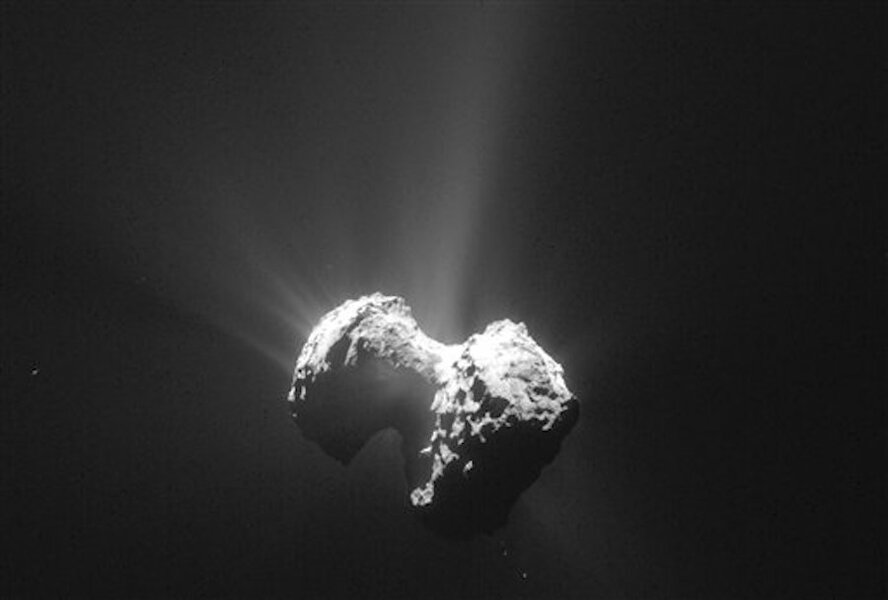Rosetta and comet 67P approach their rendezvous with the Sun
Loading...
In August 2014, ten years after its launch, Rosetta reached comet 67P/Churyumov–Gerasimenko, which is currently about 100 million miles away from Earth. Since then, it has been orbiting the flying space rock, studying the comet’s nucleus and environment as they travel together on a slow loop around the sun.
On Thursday, comet 67P will reach its closest point to the Sun in its 6.5-year orbit, and thanks to Rosetta, scientists will get a "ringside view," The Guardian reports.
As a comet inches toward the Sun, sublimated ice, dust, and gas start to erupt from its surface, creating a halo known as a coma. Scientists can’t wait to witness that activity at its peak when the comet reaches perihelion, its closest point to the Sun, on August 13.
"Perihelion is an important milestone in any comet’s calendar," said Rosetta project scientist Matt Taylor. This particular perihelion is especially exciting to scientists, he says, "because this will be the first time a spacecraft has been following a comet from close quarters as it moves through this phase of its journey.”
Last week, the European Space Agency (ESA) released images of comet 67P, including the one seen above, taken by Rosetta from about 100 miles away. The photos show "prominent jets of dust and gas streaming from the nucleus," which the ESA says provide "dramatic views" but also make it harder to navigate Rosetta.
"Rosetta’s star trackers have struggled to identify stars among the large amount of debris being ejected from the nucleus during the last week and is therefore currently moving to safer distances," wrote the ESA.
Comets are leftover remnants from the solar system's planet-building stage, which ended some 4.5 billion years ago, writes The Christian Science Monitor’s Pete Spotts. Comet 67P is so far from Earth that it can only be observed through a telescope – or with a revolutionary spacecraft.
Since Rosetta began traveling in orbit around the space rock, it has made some groundbreaking discoveries.
"[Comet 67P] sports a rubber-duck-shaped nucleus with goosebumps. It's a Baby Huey, sporting a mass of 10 billion metric tons. It displays more variety in the amount and relative abundance of the gases it sheds than researchers expected. And it sports an array of dust and chunks of debris up to six feet across that orbit the nucleus, like bees unwilling to leave the hive's neighborhood," Mr. Spotts wrote.
Last month, the ESA pushed back Rosetta's mission end-date from December 2015 to September 2016, giving researchers more time to study comet 67P after perihelion. Scientists hope the probe will eventually land on the surface of the comet, but acknowledge that it may not be possible.
"We’ll first have to see what the status of the spacecraft is after perihelion and how well it is performing close to the comet, and later we will have to try and determine where on the surface we can have a touchdown," Rosetta Mission Manager Patrick Martin said in a statement.
If Rosetta can land on comet 67P, it will be able to collect "unique data from an unprecedentedly close distance," says the ESA.
"Our problem at this stage is getting close to 67P," Mark McCaughrean, a senior scientist at the ESA, told The Guardian.
"As a result, we have to keep Rosetta relatively high above the comet, which means we cannot study it in the detail that we might have wished for. On the other hand, we are – for the first time – getting an unprecedented view of a comet as it sweeps round the Sun."





